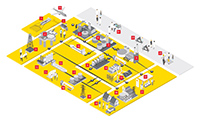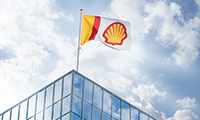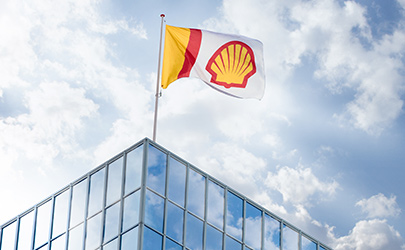Financial ratios
The following three non-GAAP measures are used to evaluate the efficiency of Shell’s utilisation of the capital that it employs. The first two measures show returns generated by Shell as a percentage of its total capital employed (consisting of total equity, current debt and non-current debt). The "return on average capital in service" measure excludes the impacts of exploration and evaluation assets and assets under construction on income and capital employed, because these assets do not yet generate returns.
|
2019 |
2018 |
2017 |
2016 |
2015 |
|---|---|---|---|---|---|
Income for the period |
16,432 |
23,906 |
13,435 |
4,777 |
2,200 |
Interest expense after tax |
3,024 |
2,513 |
2,995 |
2,730 |
2,030 |
Income before interest expense |
19,456 |
26,419 |
16,430 |
7,507 |
4,230 |
Capital employed – opening |
295,398 |
283,477 |
280,988 |
222,500 |
218,326 |
Capital employed – closing |
286,887 |
279,358 |
283,477 |
280,988 |
222,500 |
Capital employed – average |
291,142 |
281,417 |
282,233 |
251,744 |
220,413 |
ROACE |
6.7% |
9.4% |
5.8% |
3.0% |
1.9% |
|
2019 |
2018 |
2017 |
2016 |
2015 |
||||
|---|---|---|---|---|---|---|---|---|---|
CCS earnings excluding identified items [A] |
16,462 |
21,404 |
15,764 |
7,185 |
11,446 |
||||
Capital employed – opening |
295,398 |
283,477 |
280,988 |
222,500 |
218,326 |
||||
Capital employed – closing |
286,887 |
279,358 |
283,477 |
280,988 |
222,500 |
||||
Capital employed – average |
291,142 |
281,417 |
282,233 |
251,744 |
220,413 |
||||
ROACE on CCS basis excluding identified items [A] |
6.9% |
8.7%[B] |
6.8%[B] |
4.0%[B] |
6.3%[B] |
||||
|
|||||||||
|
2019 |
2018 |
2017 |
2016 |
2015 |
|---|---|---|---|---|---|
Income for the period |
16,432 |
23,906 |
13,435 |
4,777 |
2,200 |
Add: Depreciation on exploration and evaluation assets after tax |
106 |
137 |
198 |
351 |
399 |
Add: Interest expense after tax |
3,024 |
2,513 |
2,995 |
2,730 |
2,030 |
Income before depreciation on exploration and evaluation assets and interest expense |
19,563 |
26,556 |
16,628 |
7,858 |
4,628 |
Capital employed excluding assets under construction and exploration and evaluation assets – opening |
243,979 |
222,793 |
216,475 |
156,749 |
145,702 |
Capital employed excluding assets under construction and exploration and evaluation assets – closing |
244,414 |
227,938 |
222,793 |
216,475 |
156,749 |
Capital employed excluding assets under construction and exploration and evaluation assets – average |
244,197 |
225,366 |
219,634 |
186,612 |
151,226 |
Return on average capital in service |
8.0% |
11.8% |
7.6% |
4.2% |
3.1% |
|
2019 |
2018 |
2017 |
2016 |
2015 |
||||||
|---|---|---|---|---|---|---|---|---|---|---|---|
Current debt |
15,064 |
10,134 |
11,795 |
9,484 |
5,530 |
||||||
Non-current debt |
81,360 |
66,690 |
73,870 |
82,992 |
52,849 |
||||||
Total debt [A] |
96,424 |
76,824 |
85,665 |
92,476 |
58,379 |
||||||
Add: Debt-related derivative financial instruments: net liability/(asset) |
701 |
1,273 |
591 |
– |
– |
||||||
Add: Collateral on debt-related derivatives: net liability/(asset) |
23 |
72 |
– |
– |
– |
||||||
Less: Cash and cash equivalents |
(18,055) |
(26,741) |
(20,312) |
(19,130) |
(31,752) |
||||||
Net debt [B] |
79,093 |
51,428 |
65,944 |
73,346 |
26,627 |
||||||
Add: Total equity [B] |
190,463 |
202,534 |
197,812 |
188,511 |
164,121 |
||||||
Total capital [B] |
269,556 |
253,962 |
263,756 |
261,857 |
190,748 |
||||||
Gearing [B] |
29.3%[C] |
20.3% |
25.0% |
29.1% |
14.8% |
||||||
|
|||||||||||
Gearing is a key measure of Shell’s capital structure and is defined as net debt as a percentage of total capital. Net debt is defined as the sum of current and non-current debt, less cash and cash equivalents, adjusted for the fair value of derivative financial instruments used to hedge foreign exchange and interest rate risks relating to debt, and associated collateral balances. Management considers this adjustment useful because it reduces the volatility of net debt caused by fluctuations in foreign exchange and interest rates, and eliminates the potential impact of related collateral payments or receipts. Debt-related derivative financial instruments are a subset of the derivative financial instrument assets and liabilities presented on the balance sheet. Collateral balances are reported under “Trade and other receivables” or “Trade and other payables” as appropriate. Gearing is a non-GAAP measure.
 Our businesses and organisation
Our businesses and organisation
 Overall highlights in 2019
Overall highlights in 2019
 Projects & Technology overview
Projects & Technology overview
 Financial data
Financial data
